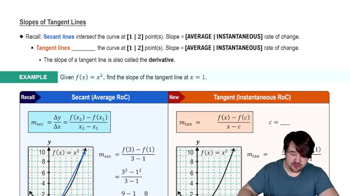Symmetry properties Suppose ∫₀⁴ ƒ(𝓍) d𝓍 = 10 and ∫₀⁴ g(𝓍) d𝓍 = 20. Furthermore, suppose ƒ is an even function and g is an odd function. Evaluate the following integrals.
(c) ∫₋₄⁴ (4ƒ(𝓍) ― 3g(𝓍))d𝓍
 Verified step by step guidance
Verified step by step guidance Verified video answer for a similar problem:
Verified video answer for a similar problem:



 6:37m
6:37mMaster Average Value of a Function with a bite sized video explanation from Patrick
Start learning